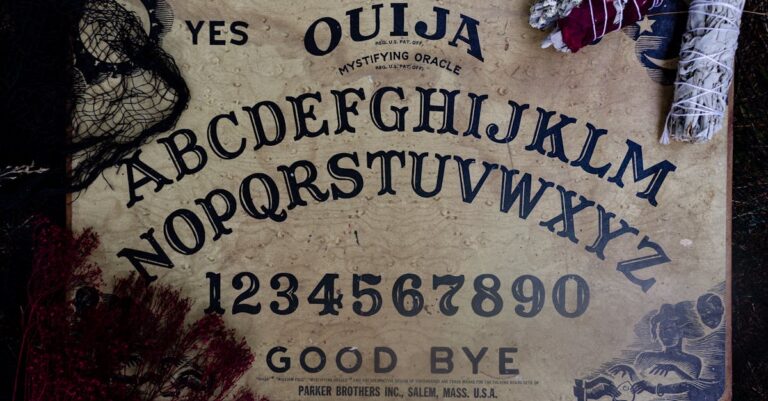
## The Cartographer’s Cipher
The rain smelled of ozone and damp asphalt, clinging to everything like a second skin. Elias traced the condensation on the window of The Correspondence House, watching cars blur past in streaks of red and white. He’s been coming here for six months, religiously, waiting for a reply. A reply that hadn’t arrived in weeks.
The House wasn’t much to look at, a Victorian relic squeezed between a trendy bistro and a sprawling parking lot. Inside, the air hung heavy with the scent of aging paper and faint floral perfume—a relic from a bygone era when letters mattered. Elias liked that; he felt a kinship with the ghosts of ink and parchment.
He glanced at Mrs. Hawthorne, the House’s curator, a woman whose face seemed permanently etched with quiet disapproval. She dusted a row of antique writing desks, her movements precise and economical.
“Anything today?” Elias asked, keeping his voice low.
Her gaze flickered over him. “Nothing. Same as the last three Tuesdays.” She returned to her task, a faint rustle of fabric accompanying her silence.
Elias’s stomach tightened. Three Tuesdays. It felt like an eternity. He’s spent years crafting letters to Julian Thorne, a cartographer who vanished without a trace seventy years ago. A man whose final correspondence landed in this very House, unclaimed. Elias’s letters weren’t pleas for answers; they were observations, musings on maps, the way a single line could alter perception. He felt an odd connection to Thorne, a shared obsession with the topography of ideas.
He left without another word, the rain picking up speed as he stepped out into the street. The neon glow of the bistro cast an unsettling sheen on the wet pavement. He walked, a familiar ache settling in his chest.
His apartment was small, cluttered with maps and research notes. A large-scale map of the Pacific Northwest dominated one wall, marked with countless annotations in faded ink. Julian Thorne’s last known map was a detail from that region, charting submerged caves along the Oregon coast. Elias believed Thorne had discovered something significant, and he’s determined to find it.
A glint of paper caught his eye from beneath a pile of mail. It was an envelope, cream colored with a handwritten return address: “The Correspondence House.” He ripped it open. Inside wasn’t a letter, but a folded piece of parchment covered in an unfamiliar script, intricate symbols woven together like tangled vines.
He spent the next few hours deciphering it, comparing the symbols to ancient alphabets and cartographic notations. Finally, a pattern emerged. It wasn’t a language; it was a cipher. A complex one, but solvable.
The message read: *“Where the river forgets its name, seek the silent watcher.”*
Elias frowned. The Deschutes River? It was miles away, carving a path through the high desert of Oregon. What did “silent watcher” mean?
He returned to The Correspondence House the next Tuesday, a newfound urgency propelling him. He found Mrs. Hawthorne at her usual post, dusting the desks with almost robotic efficiency.
“I received something,” he said, placing the parchment on her desk.
She picked it up, examining it with a critical eye. “Interesting.” She paused. “We found another one yesterday, tucked inside a letter addressed to a Professor Albright, dating back to 1948.”
“Another?” Elias felt his pulse quicken. “What did it say?”
“It referenced a constellation, Draco. And then…a direction: North-Northwest.” Mrs. Hawthorne’s voice remained level, devoid of emotion. But Elias saw a flicker of curiosity in her eyes.
“Are you saying someone is responding to Thorne’s correspondence, seventy years later?” He stared at her.
“It appears so.” She returned to dusting, a faint smile playing on her lips. “We’ve begun collecting them.”
Elias spent the next few days tracing Thorne’s maps, comparing his notes with the cryptic messages. The constellation Draco pointed towards a remote section of the Cascade Mountains, an area largely unexplored and riddled with dense forests.
He decided to follow the clues, booking a flight to Portland and renting a Jeep for navigating the rugged terrain. The rain followed him, clinging to the windshield like watchful eyes.
The landscape shifted as he drove deeper into the mountains, the trees growing taller, the air thickening with a primal stillness. He followed the direction provided in the second message—North-Northwest—until he reached a clearing, dominated by an ancient, gnarled cedar tree.
Carved into the trunk was a series of symbols—the same cipher he’s been struggling to unravel. Beneath it, etched more recently, were two words: *“Keep Seeking.”*
He found another message tucked inside a small hollow in the tree: *“The mountain watches, the valley remembers.”*
He realized the messages weren’t just directions; they were fragments of a larger narrative, a breadcrumb trail left by someone—or something—that understood Thorne’s work.
He spent the next week following the trail, his obsession deepening with each new clue. The messages led him through treacherous trails, across rushing rivers, and into the heart of a forgotten wilderness. He discovered hidden caves marked with Thorne’s signature—symbols and annotations, meticulously preserved within the cool, damp air.
He wasn’t alone in his pursuit. He started noticing subtle signs—a disturbed patch of earth, a freshly broken twig, a faint scent of pipe tobacco. Someone else was following the trail, someone who understood the cipher as well.
He found another message affixed to a moss-covered boulder: *“The answer lies within the echo.”*
He realized “echo” wasn’t literal. It was a reference to the Deschutes River, where Thorne’s last known map detailed submerged caves.
He chartered a small boat and headed toward the river, his gaze fixed on the churning waters. He spent hours scanning the surface, searching for any sign of a hidden entrance.
Then he saw it—a nearly imperceptible ripple in the water, a subtle distortion of the surface. He anchored the boat and dove beneath the waves, his heart pounding in his chest.
The water was frigid, visibility limited to a few feet. He swam toward the ripple, his hand brushing against something solid—a submerged cave entrance, hidden beneath a curtain of algae.
Inside the cave, he found something astonishing—a series of intricate murals painted on the walls. They depicted a forgotten civilization, an ancient people who worshipped a celestial being represented by Draco, the constellation. The murals confirmed Thorne’s suspicions; he hadn’t simply stumbled upon a geographical anomaly, but an unearthed history.
He surfaced to find a figure standing on the shore—an elderly man with eyes as gray and weathered as the mountains themselves. The scent of pipe tobacco hung in the air.
“You found it,” the man said, his voice raspy but calm.
“Who are you?” Elias asked, wary.
“My name is Silas Pruitt.” He gestured towards the cave opening. “I was Julian Thorne’s apprentice. We knew they would find it eventually.”
“They? Who left these messages?”
“A collective,” Silas explained. “We’re guardians, protectors of the knowledge Julian uncovered. We leave the messages to guide those who are worthy, those with a genuine thirst for understanding.”
“Why Thorne? Why this cipher?”
Silas smiled. “Julian was a cartographer, yes, but he understood something greater than just lines on paper. He understood that maps aren’t just about locations; they’re about stories, about connections, about the way we perceive the world.”
“And now?” Elias asked.
“Now, you understand,” Silas said. “You’ll carry this knowledge with you, share it responsibly.”
Elias nodded, a profound sense of responsibility settling upon him. The rain began to fall again, washing over the mountains, cleansing the land. He looked back at the cave entrance, a silent promise echoing in his heart. The correspondence wasn’t over; it had just begun. He was now a part of the map, another line added to the intricate tapestry that connected past and present. The silent watcher had found his successor.


